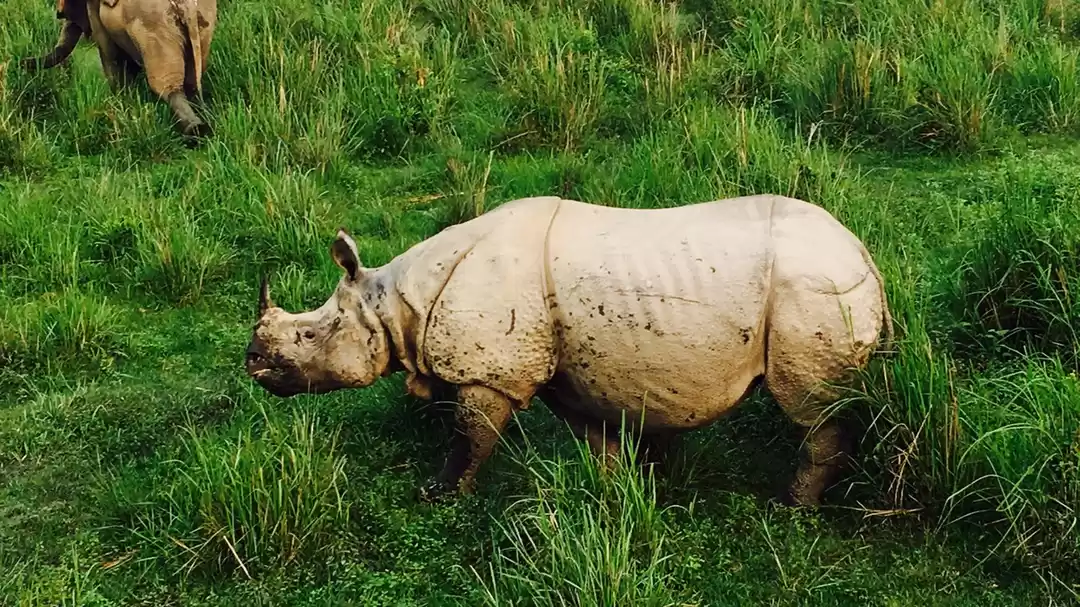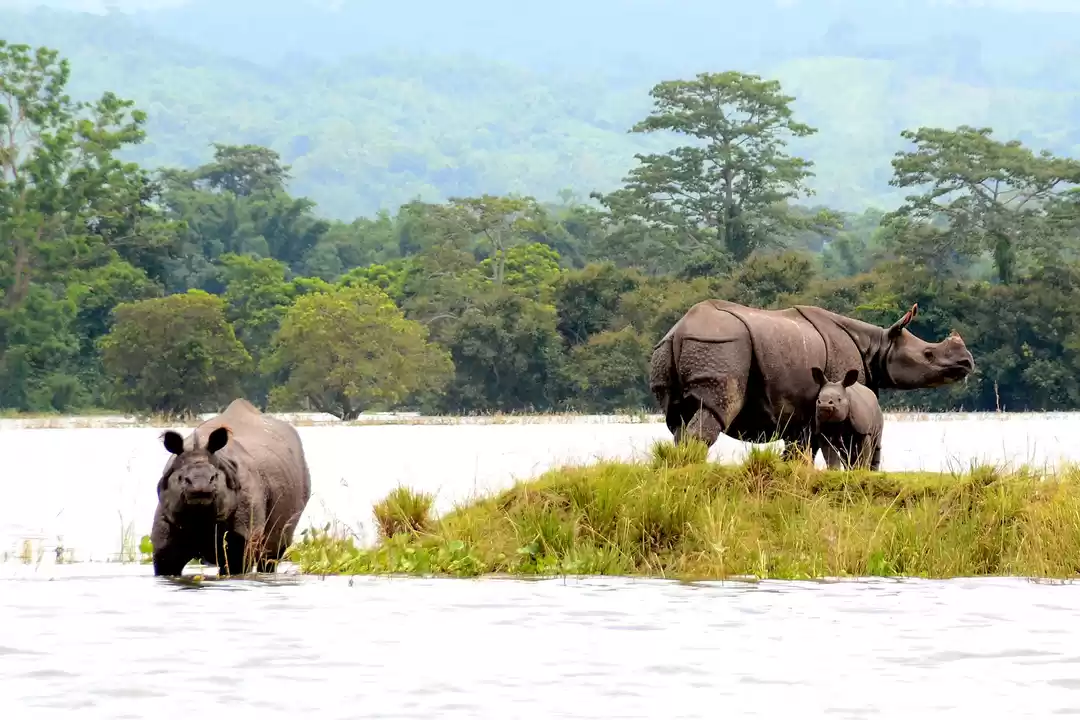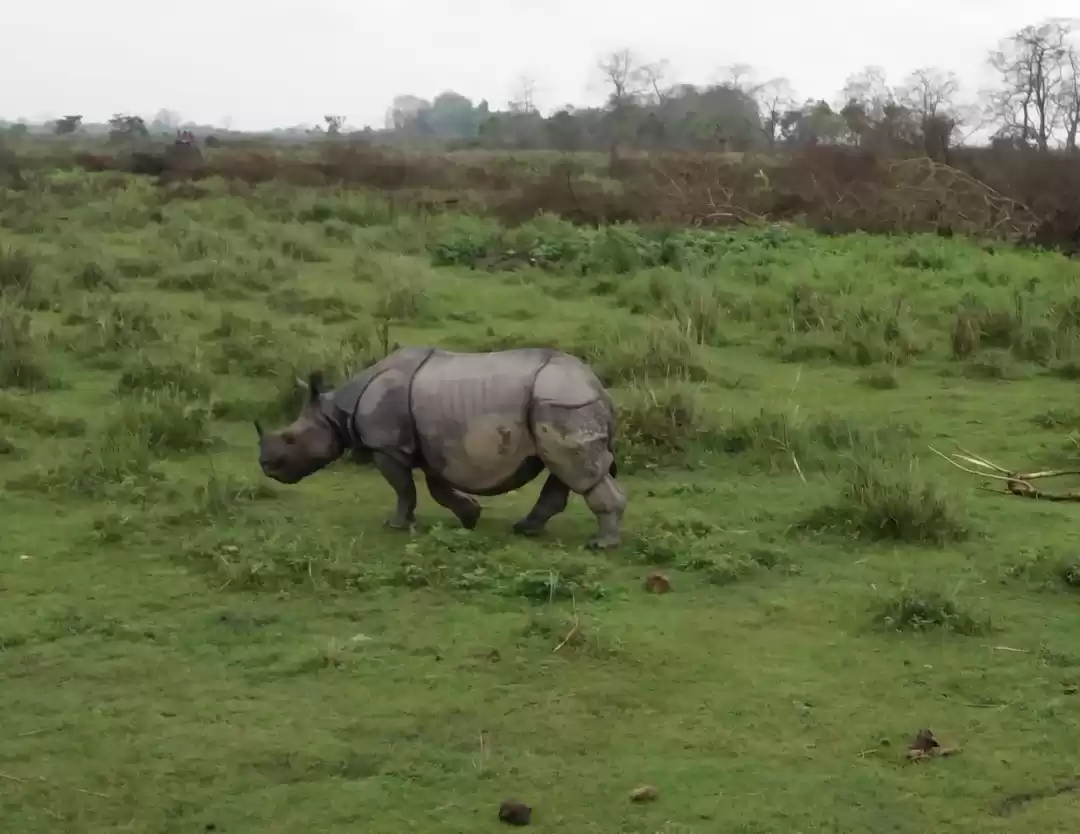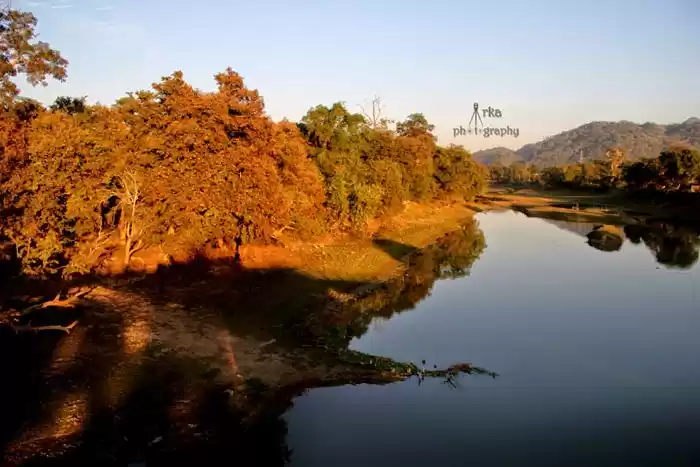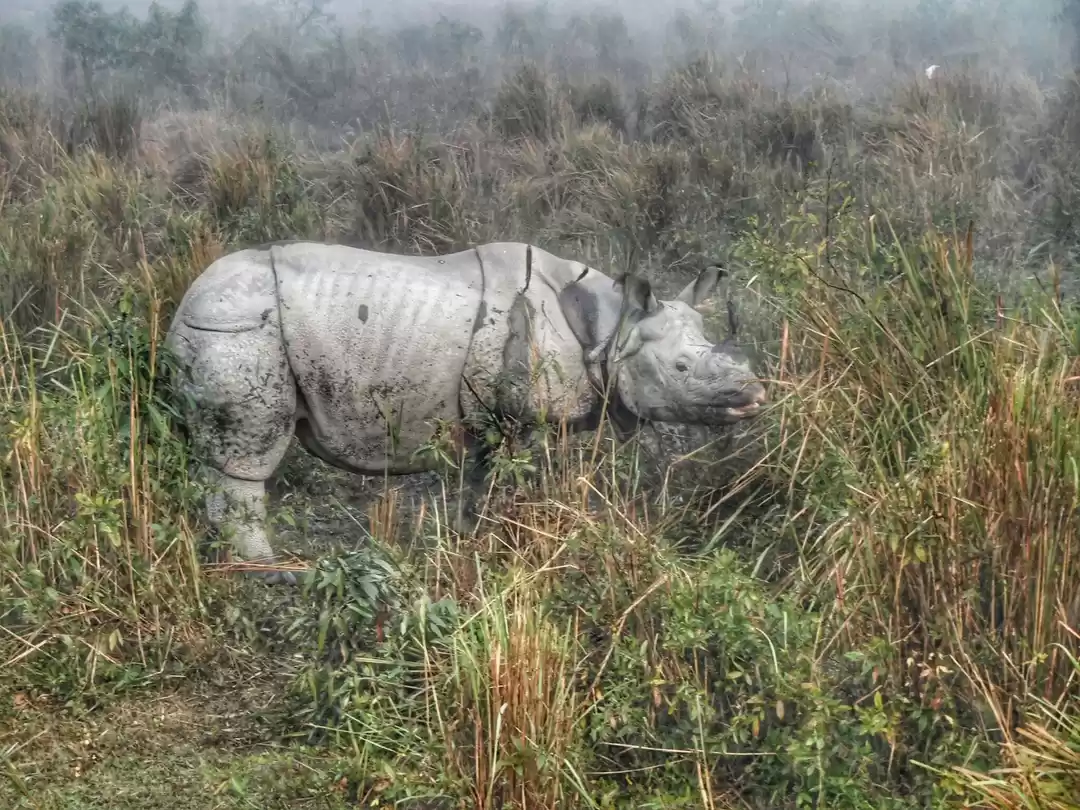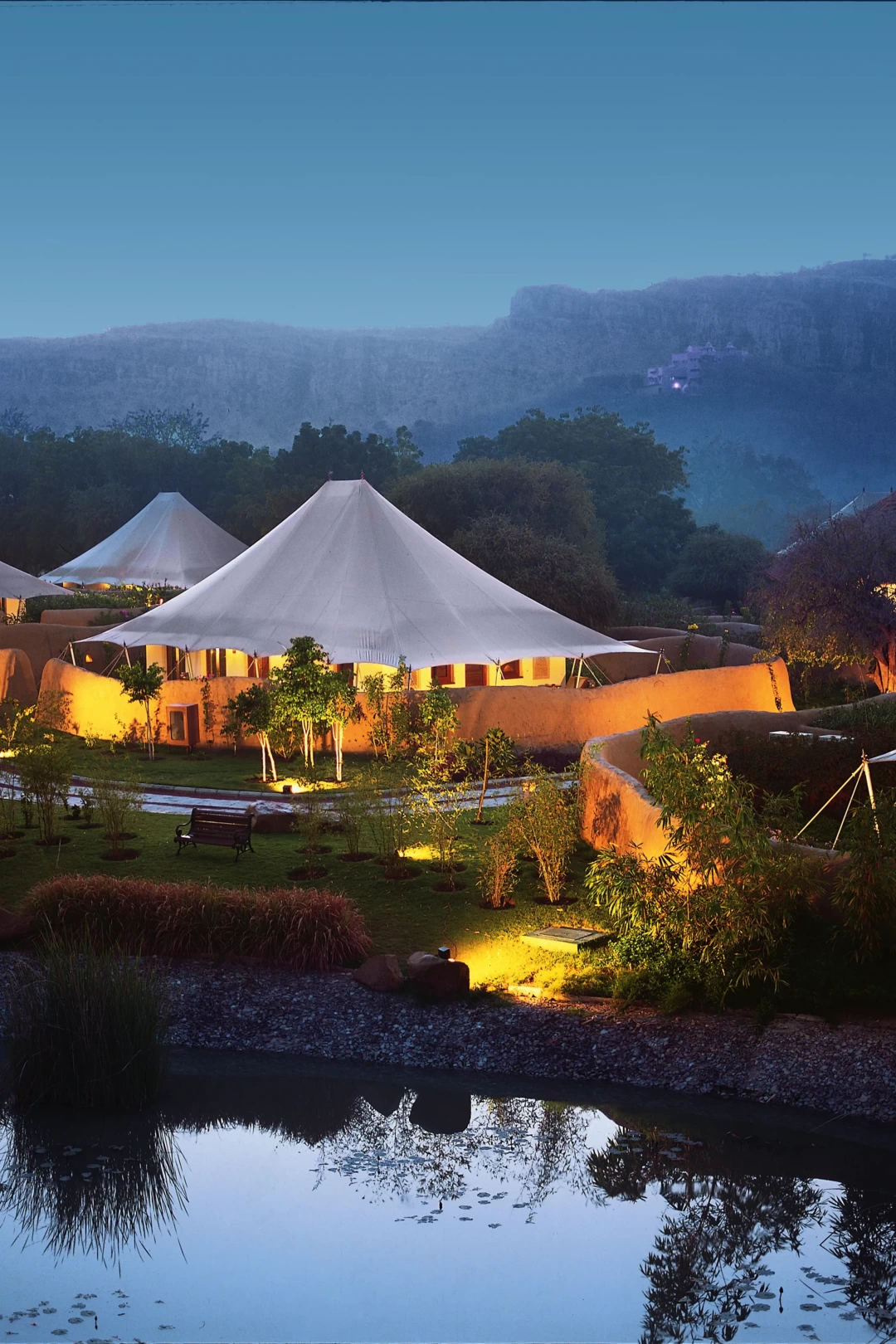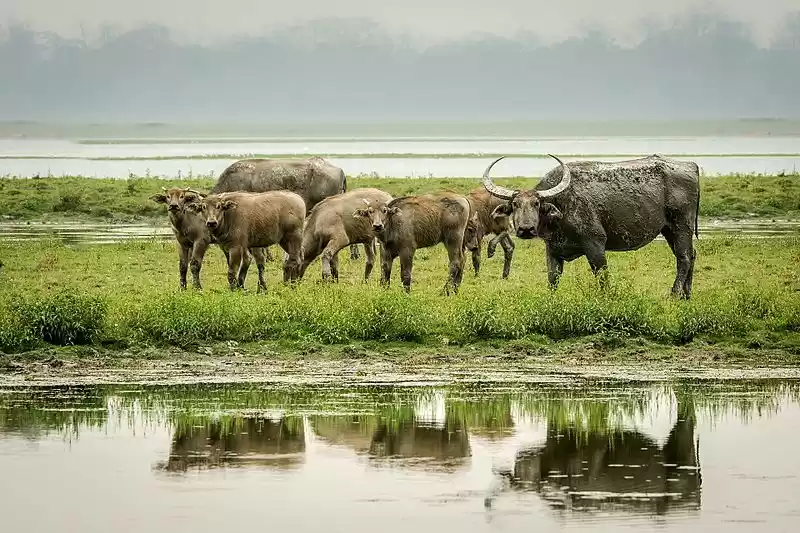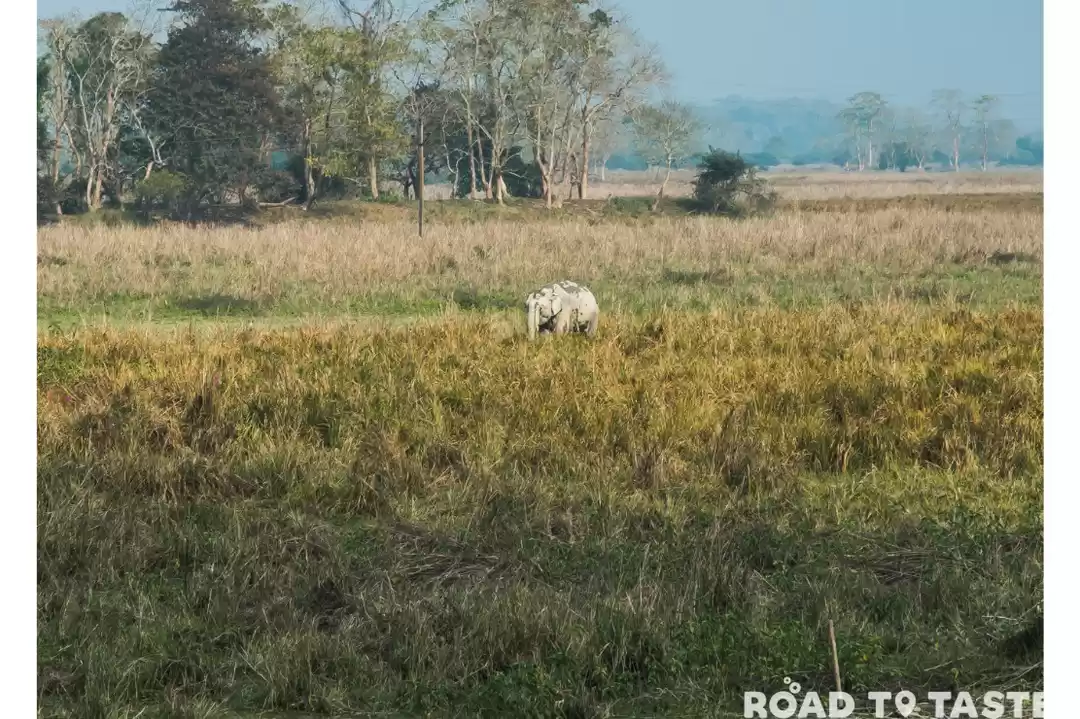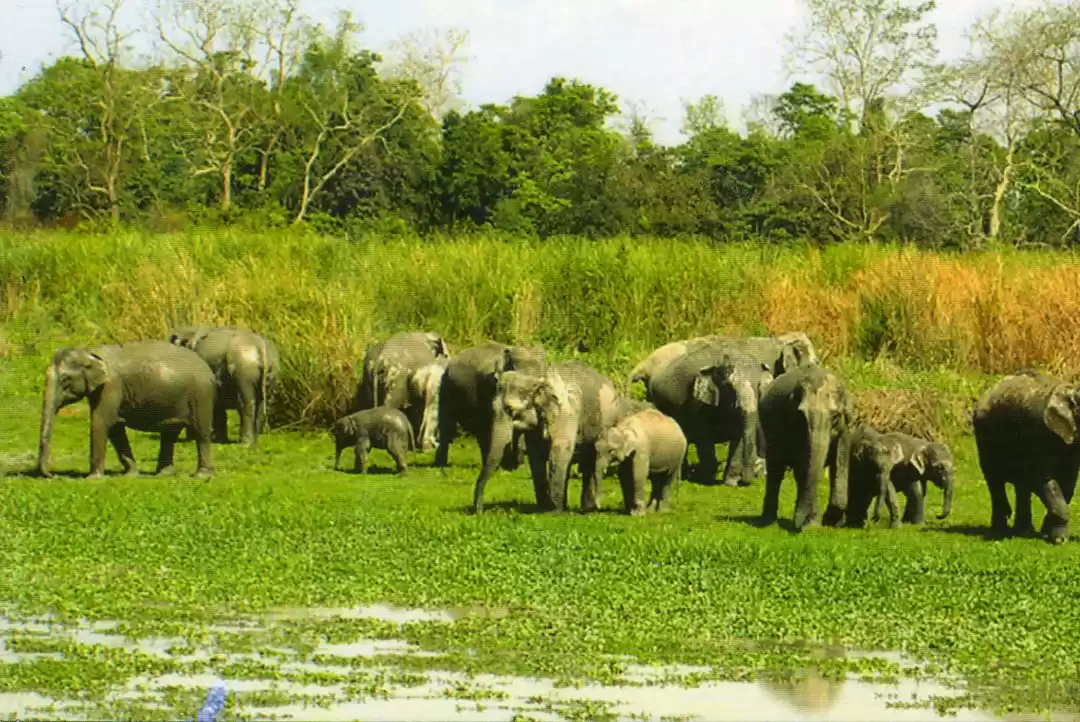
'Kiba dekhiline', our jeep safari driver, Bablu, nonchalantly asked his oncoming friend in another jeep. His friend responded with a twitched smile, which translated to "no". The communication was simple. 'Did you see a tiger?' and the answer was No. So the sight a tiger syndrome has caught up in Kaziranga National Park too. That is so not healthy news. One thing I really liked about Kaziranga was its disassociation with the obsession with the Royal Bengal Tiger. I have been to almost all the known national parks in India and somehow, I felt the whole focus centered around 'showing you the tiger'. The whole point of arrival was 'when you see a tiger'. The frenzied rush, sometimes to the point of a speed chase, whenever the word is out that a tiger is spotted, kills all the subtlety of a jungle safari. The whole jungle seems like a gaunt, windswept landscape post that exercise.

I have been to almost all the known national parks in India and somehow, I felt the whole focus centered around 'showing you the tiger'
I have been to Kaziranga National Park, to experience paid trips in the jungle, more than a dozen times. But off late the epidemic of tiger sighting is greatly visible and spreading across all channels here. I am sure the rhinoceros is losing its star status in the jungle ramp. Kaziranga for heaven's sake is one of the biggest rhino conservation areas in the world. It is 430 square kilometers of dense foliage and the density of wildlife is astonishing. It is sometimes a shame, with all due respect to the Royal Bengal Tiger, that tourists have to occasionally suffer missing out on so many other animals and birds.
Location of Kaziranga National Park
Kaziranga National Park is located in the southern bank of the Brahmaputra River in Assam and one remarkable thing about this national park is the number of natural water bodies. As per the latest census report there are over 2400 rhinos in this park.
There is something very prehistoric about a rhinoceros. I have occasionally focused my eyes on a rhino, only to enlarge it in my urban mind as a dinosaur. It is defined as a large, heavily built plant-eating mammal with one or two horns on the nose and a thick faded skin. The rhinos in India are all one-horned, so if you spot an out of place rhino logo, you know what to do. It is a shame that their horns are a fancy to a few to be a dagger cover in the Middle East or to cure impotency in Chinese men.
Kaziranga and its conservation history
Kaziranga National Park has done a commendable job at rhino conservation with two-thirds of the world's rhino being put in one place. It is considered a safe zone for the rhinoceros population. It is said that Lady Mary Curzon, wife of the then Viceroy Lord Curzon of Kedleston was devastated in not seeing a single rhino after visiting the park. Her sadness serves as a catalyst for initiatives to make Kaziranga forests a reserved one, especially devoted to rhinoceros conservation. Kaziranga wildlife is constantly under threat; both from manmade and natural factors. The annual fury of the Brahmaputra floods, land-hungry tea garden owners, poaching, and ever-expanding human settlements.
The Kaziranga Experience
It was a sunny February morning in 2020 that we undertook this jeep safari in the central range of the national park. There are four ranges in Kaziranga where tourists are allowed inside the park, each with designated jeep tracks. After an hour into our safari, a successful jungle ride so far, we arrived at a point known as Kerasin. It was like a pit stop. Here we met another group. A weary-looking group of four men, who happened to be wildlife photographers from Kolkata.
They looked distraught and in their weather-beaten jungle attire appeared to have reached the end of the world. Their equally desolate-looking guide informed us that they had been coming to the jungle 3 times a day for the last four days and had not yet sighted the tiger. It was as if he had failed a test! Without much ado about their failed trips, we decided to leave them to their woes and carried on with our jungle business.

During the month of February or late January, the forest guards followed the annual ritual of burning down the dry elephant grass, which seems to engulf a lot of the jungle. The burning is of course contained and monitored closely. This practice helps new grass shoots to emerge as soon as the land receives its first pre-monsoon rains. While these practices sometimes lethal to the tiny birds that might have nests in these dry bushes, it is a necessary evil to keep food flowing for the herbivores and subsequently for the survival of the carnivores. As the jungle is being burned, we saw dozens of Indian Rollers, in colonies, hovering above the burnt grass tinder munching on insects that were escaping from the smoke and fire.

Getting on the wrong side of nature : Responsible Wildlife Viewing
Watching and photographing animals in their natural surroundings is always fun. But avoiding proximity to wildlife animals during animal sighting is of utmost priority, as many a times this has provoked wild animals to attack safaris. This we learned from experience in this safari.
And the story of the jungle continues
We drove out of Daphlang checkpoint and saw a lone female elephant sneaking behind the tall grass beside the track. With hopes of capturing some NatGeo mode photographs, as the scenery behind her looked straight out of their magazine pages, we parked right in the middle of the track. We were engrossed taking pictures from different angles and it was only when Bablu saw in his rearview mirror that a male elephant was closely monitoring us, we realized we were ruining a romance. It was the elephant mating season. We managed to swerve back and observe the male elephant get closer to his date and sneak her away to a zone devoid of prying human eyes and flashing cameras.

One thing I have learned, with my time in the jungles, these seemingly harmless, large-sized grass munching mammals are very aggressive under two circumstances. One if they are in the heat and the other when they are protecting their young ones. Under both the scenarios they no longer care about their tourist-attracting powers. Priorities change.

Since 2015 the number of rhinos has increased in Kaziranga National Park, as has the tiger population, with more sighting of cubs. Of the 167 tigers in Assam, more than 125 are believed to be in Kaziranga. In spite of the high density of tigers in this park, tiger sighting is a bit difficult due to its thick forests. They say you need to have an open mind when you visit a jungle.
This is nature and wildlife is unpredictable. A national park is not a zoo. Instead of pestering your guide and safari driver to show you what you want to see, it is best to savor whatever the jungle offers. And in Kaziranga one is never disappointed. The incredible birdlife, wild elephants, and the beauty of the landscape and of course the one-horned rhino are in bountiful.
The sheer sight of heaps of rhino dung amplifies the abundance of life in Kaziranga. It was almost quarter past 10 AM and our three-hour safari was coming to an end.

Bhaikon Koch, our seasoned naturalist from the lodge, gave me his ever assuring smile. It meant the next safari might be a better one. It meant we might even see a tiger in the next one. Well I smiled back and this was one of satisfaction.
I went with a blank canvas into the jungle this morning and I managed to come out with a colorful one. In my case, the canvas was my phone storage. I did manage to capture more than 1 gigabytes of photographs in one single jungle safari. The jungle had provided me enough to last a lifetime of memories. And Kaziranga offers in plenty to the humble and less needy ones.

"If man doesn't learn to treat the oceans and the rainforest with respect, man will become extinct."
Published by Amitabh Sarma
My name is Amitabh Sarma and I am a storyteller. People fondly call me the “traveling pundit”; I humbly present myself as the “bearded traveling soul”. This story originally appears in my blog site www.beardedtravelingsoul.com. Stay Blessed!














